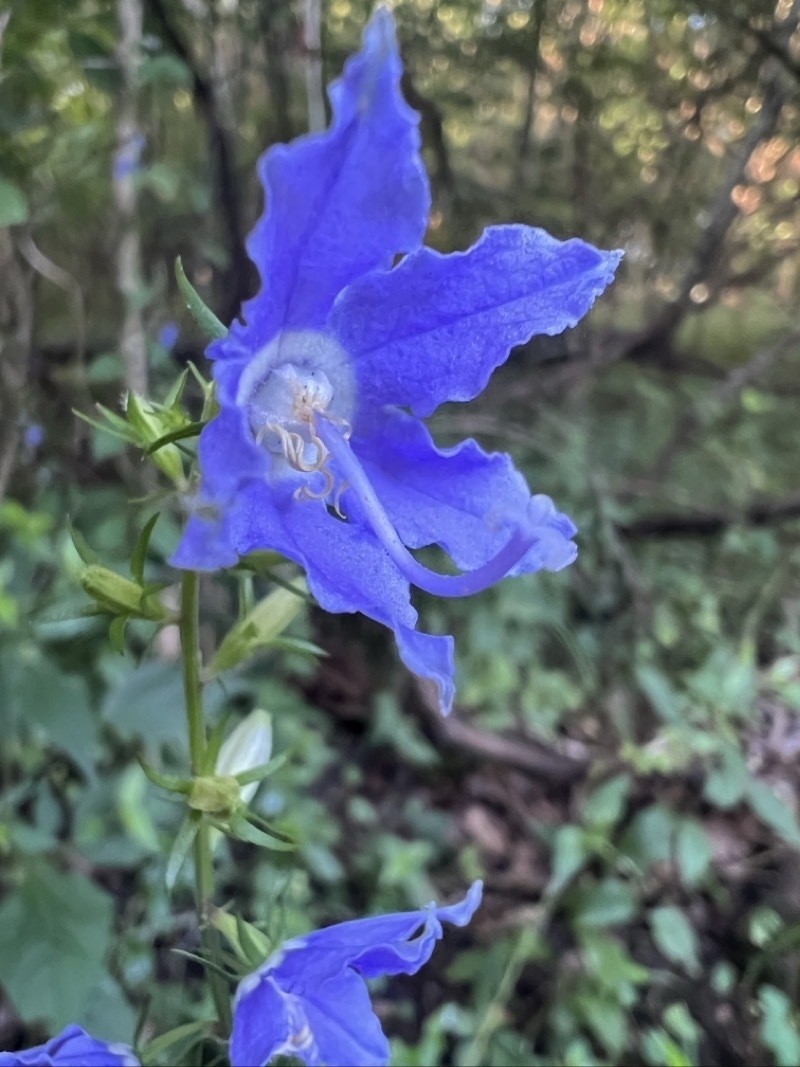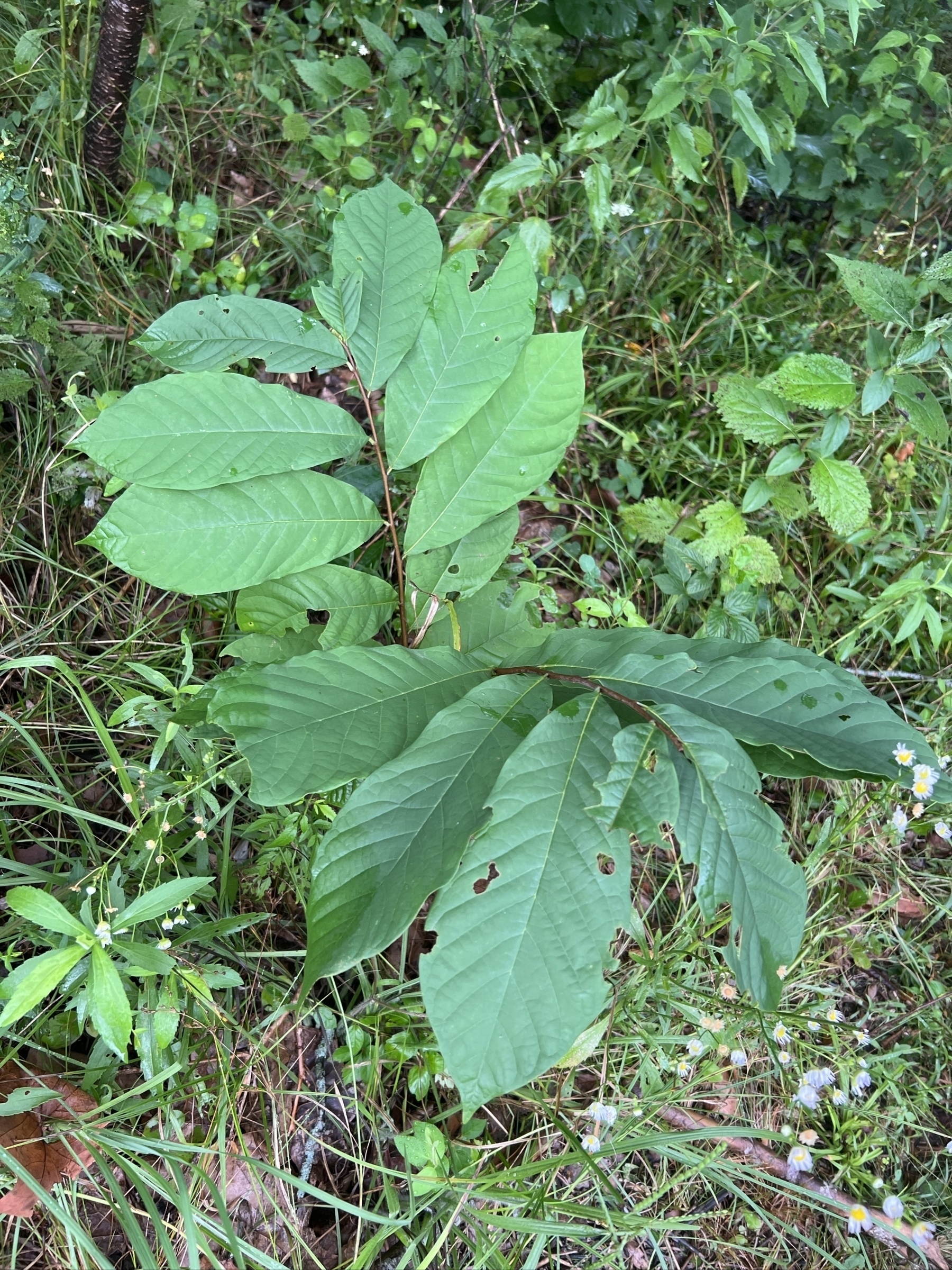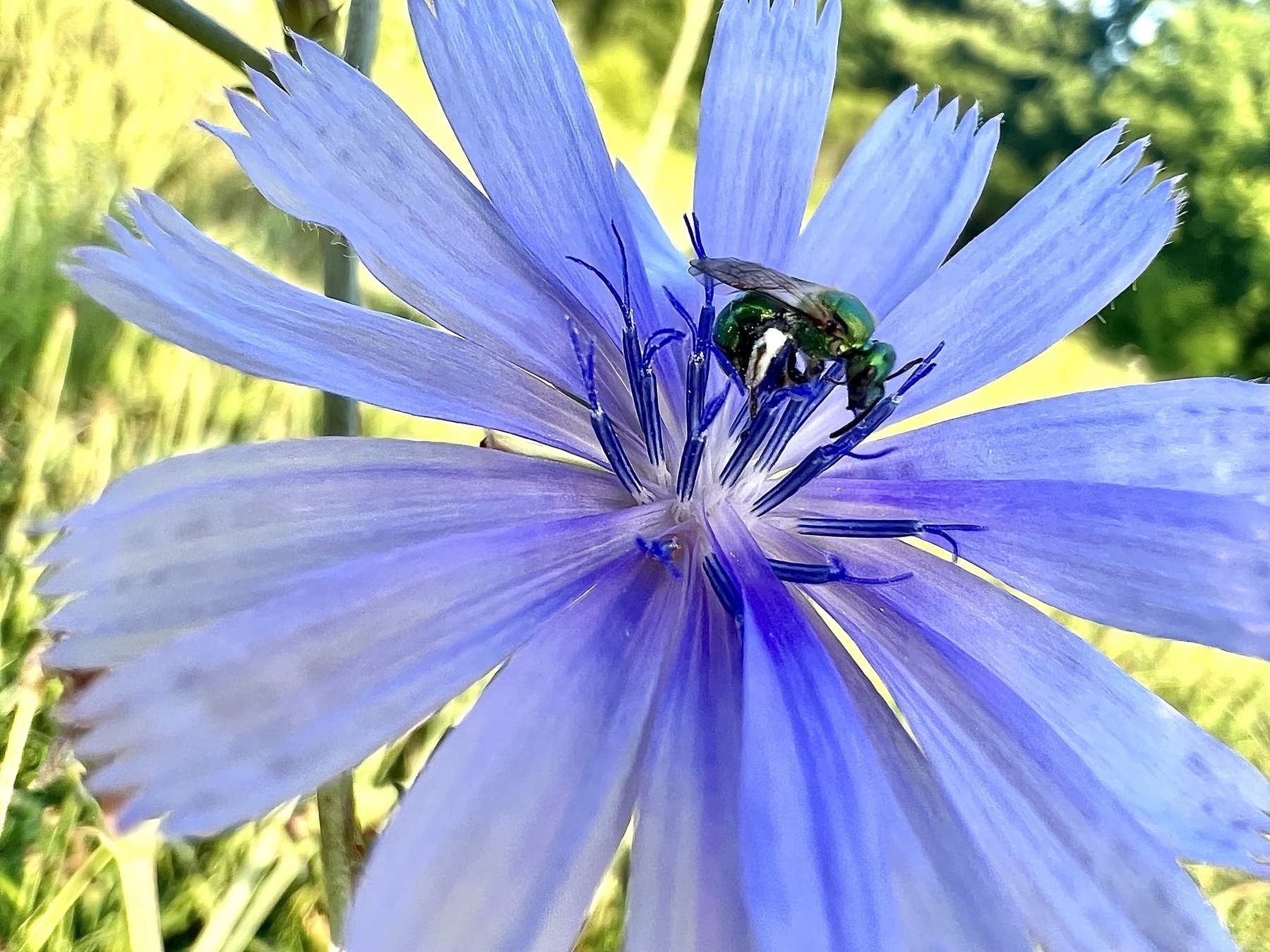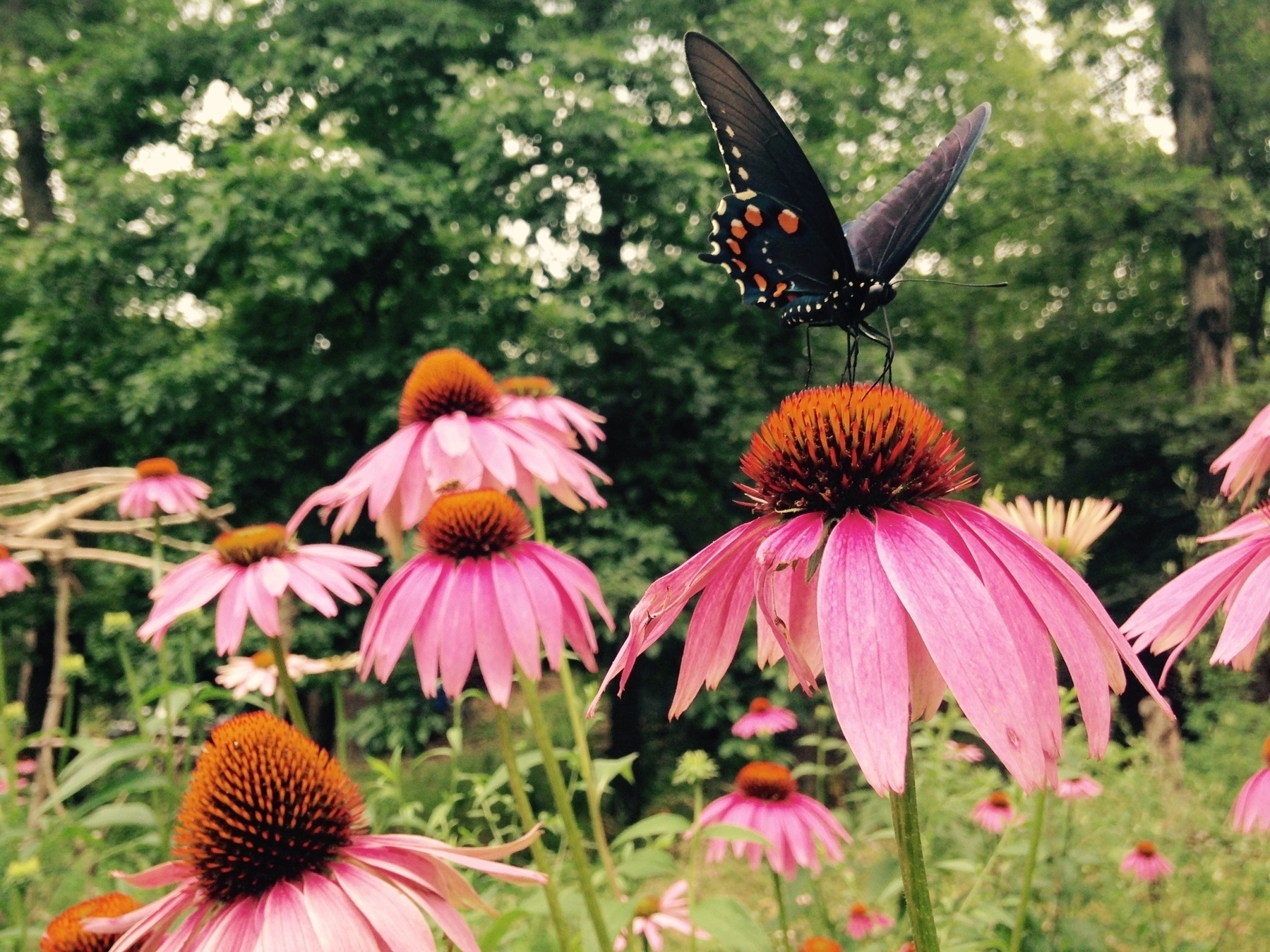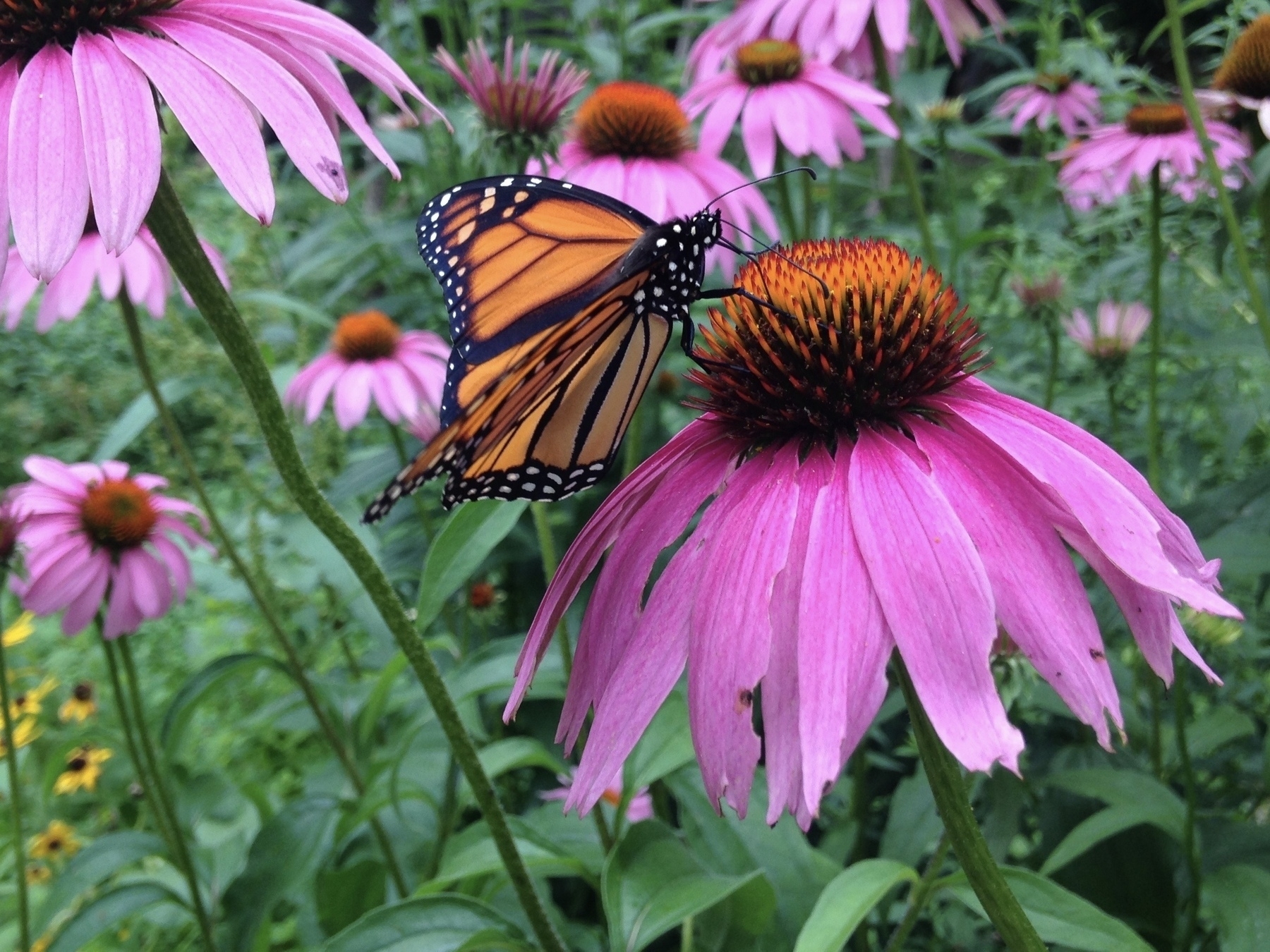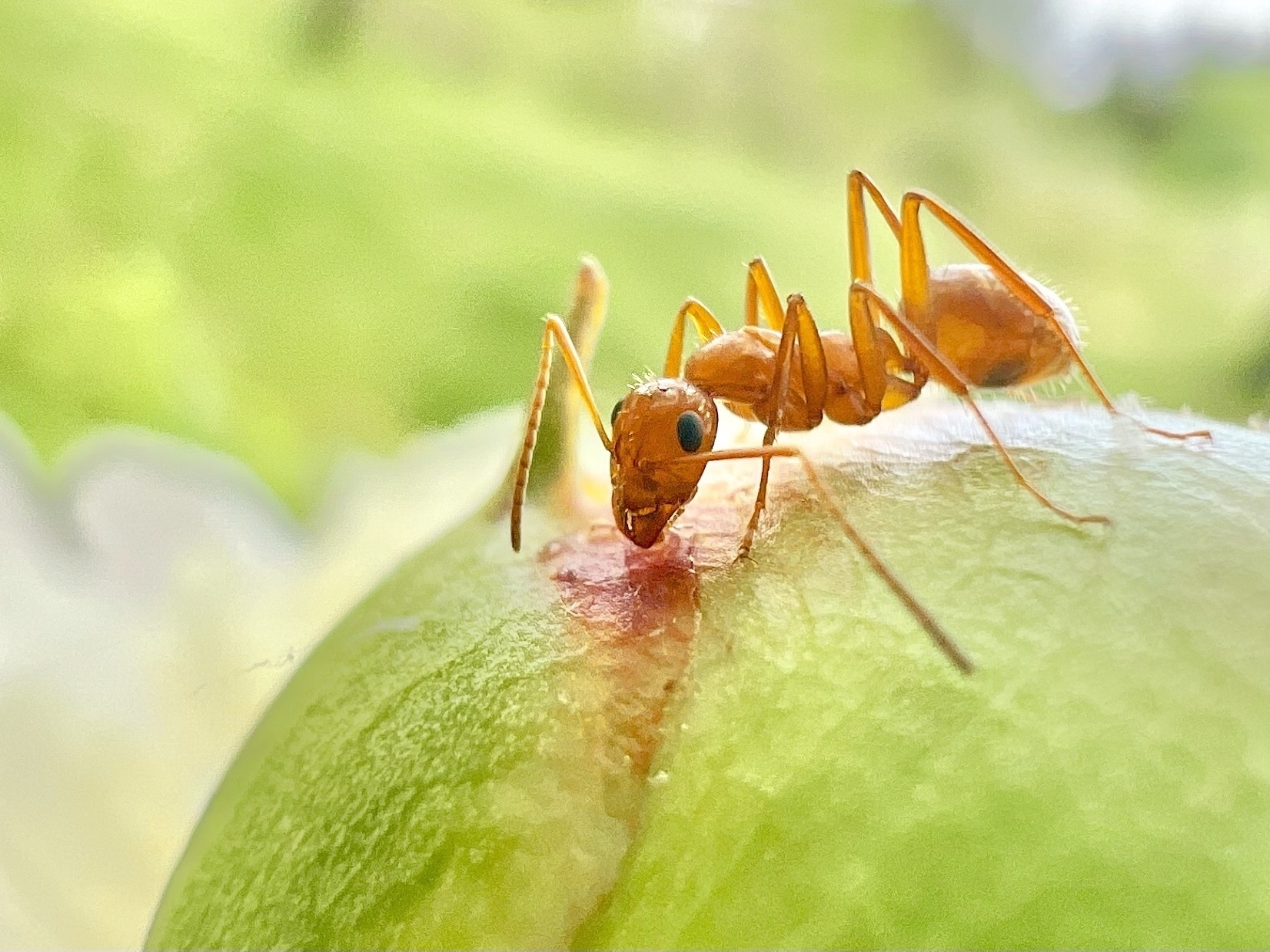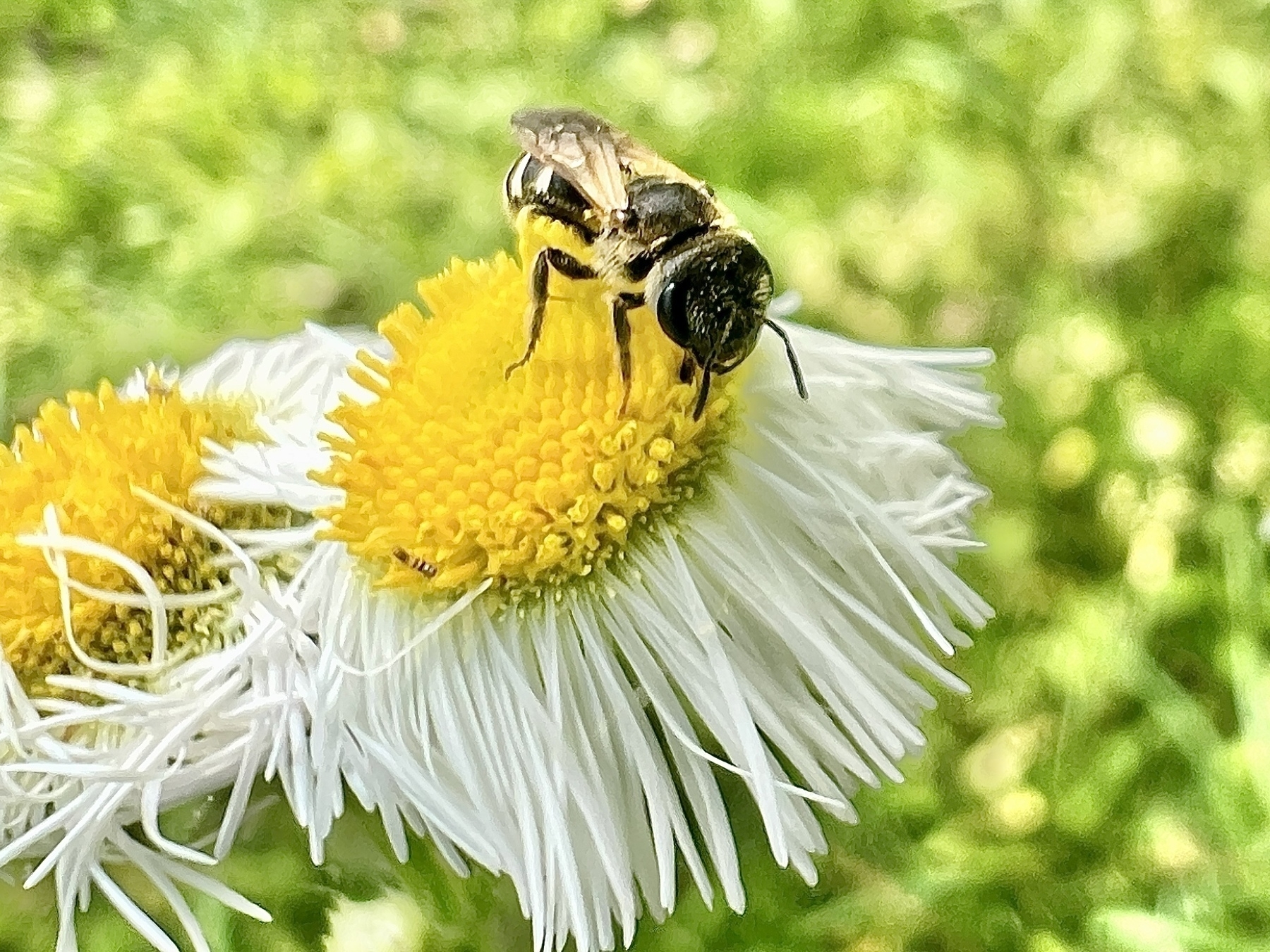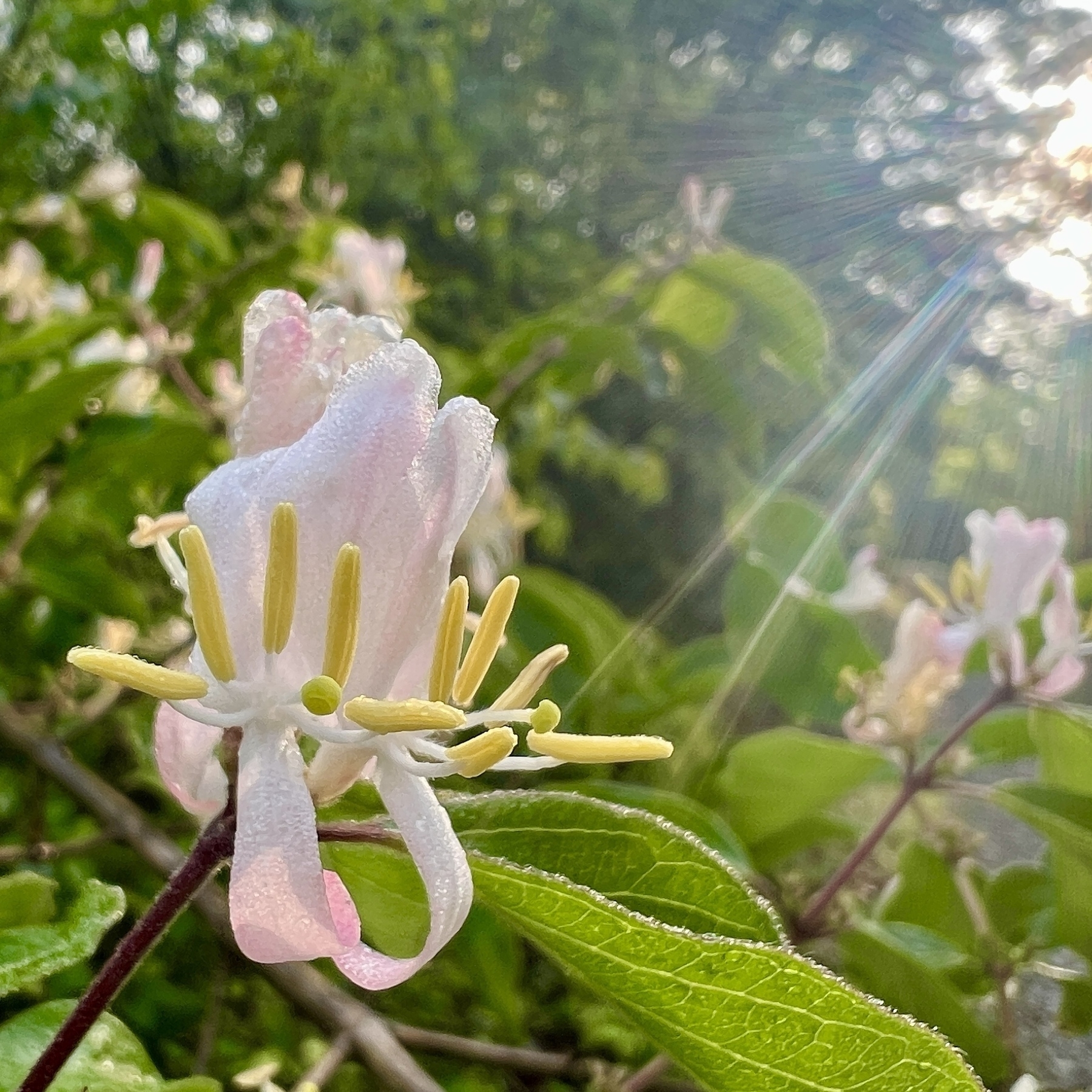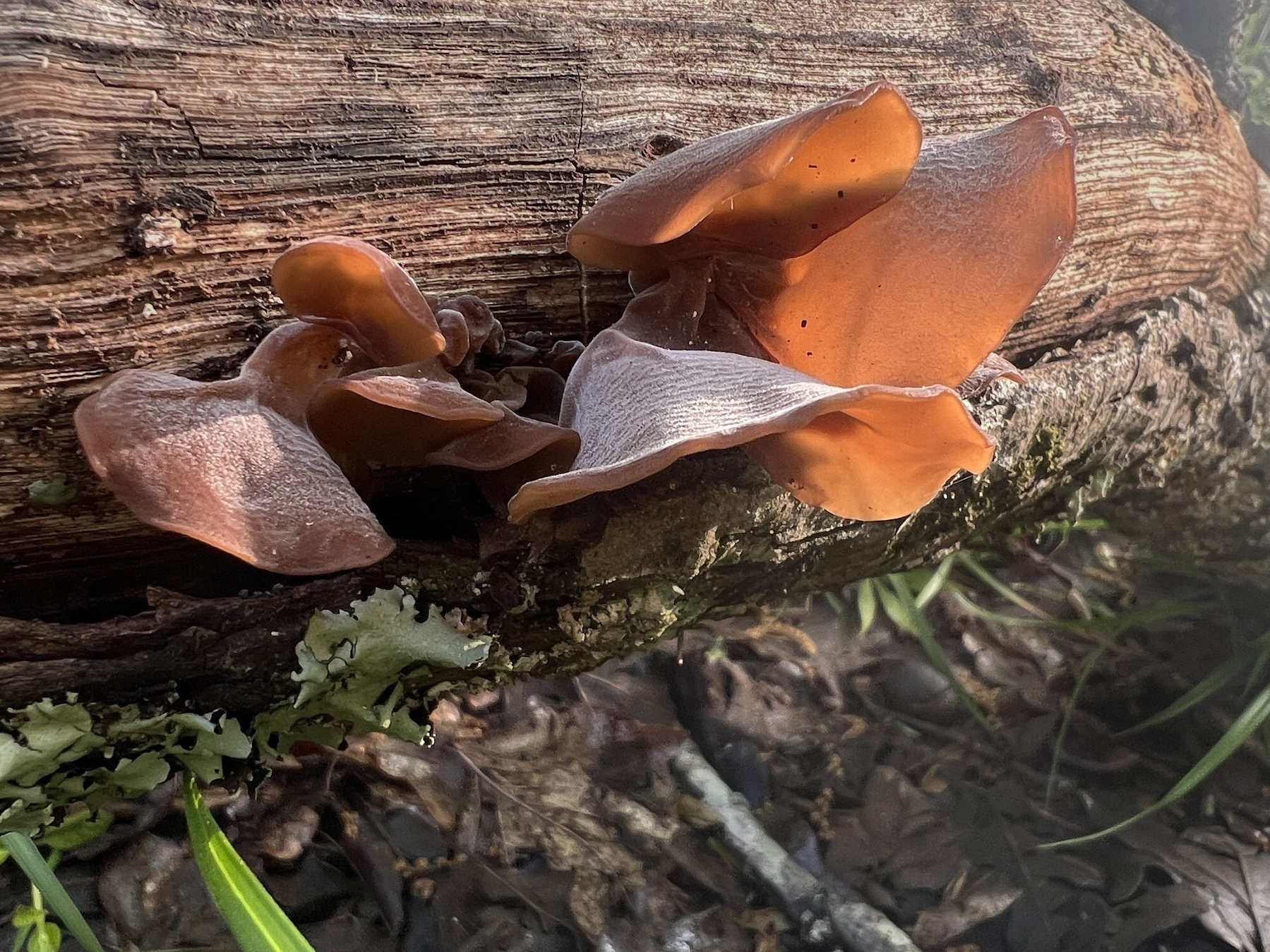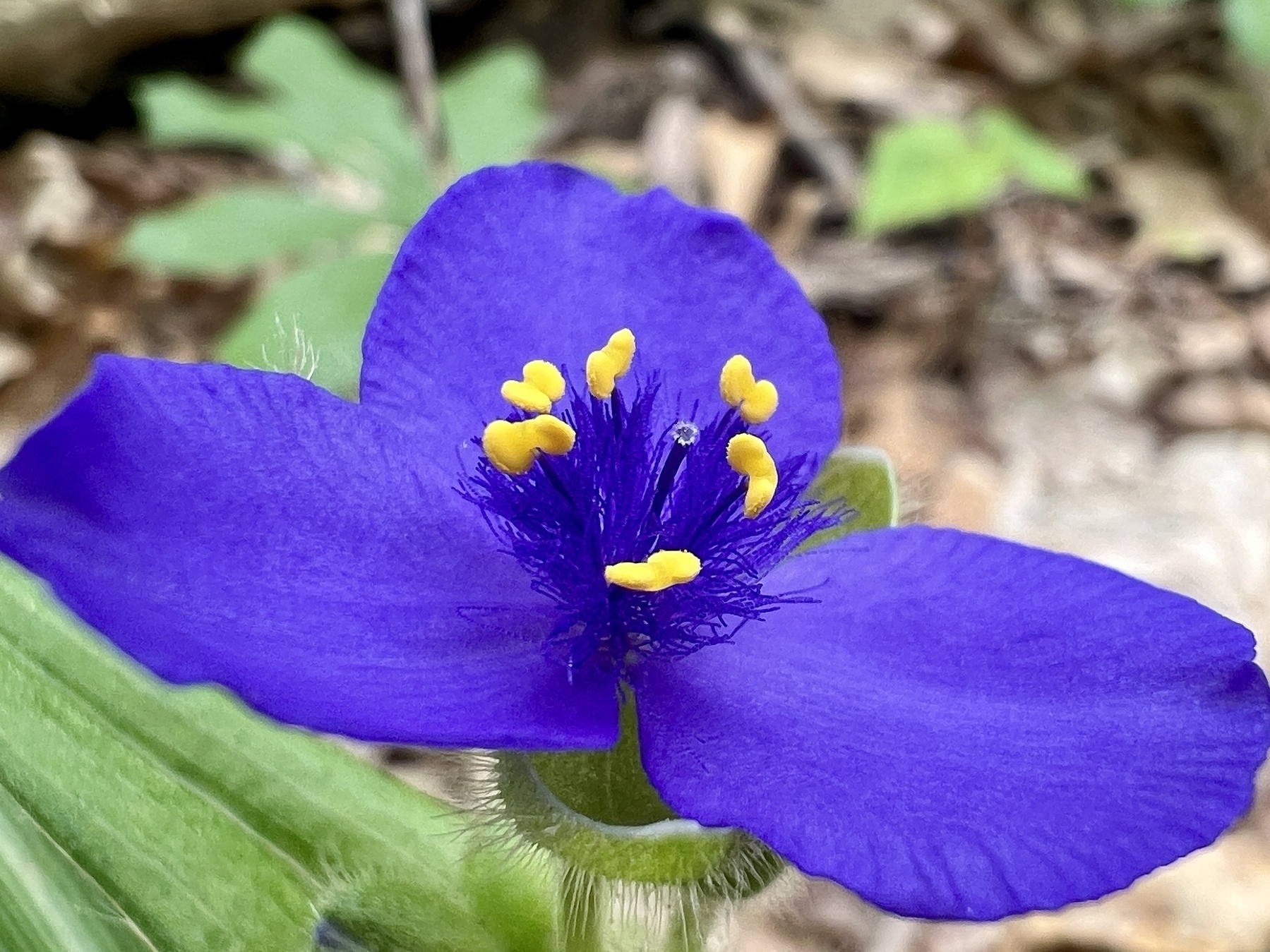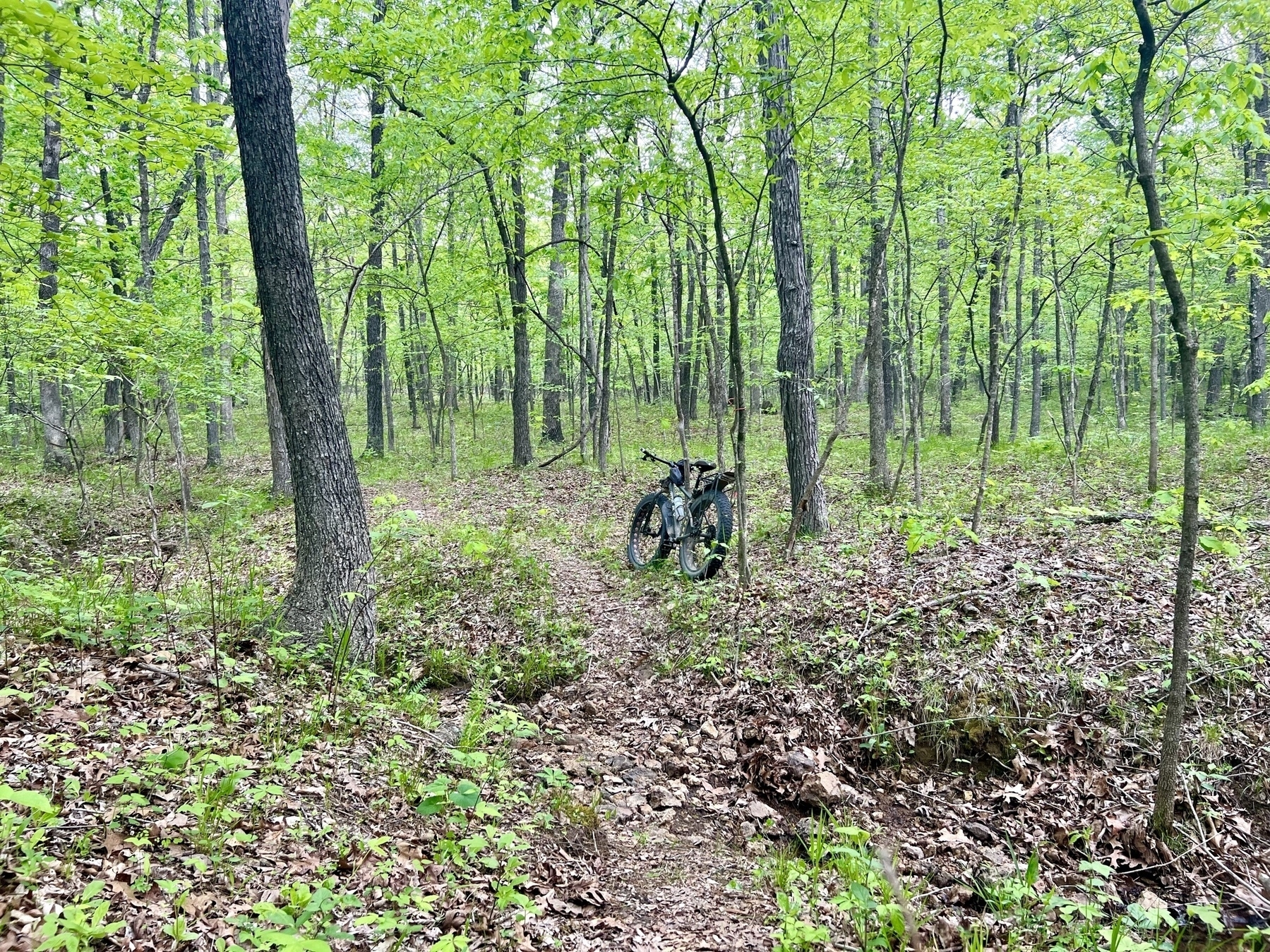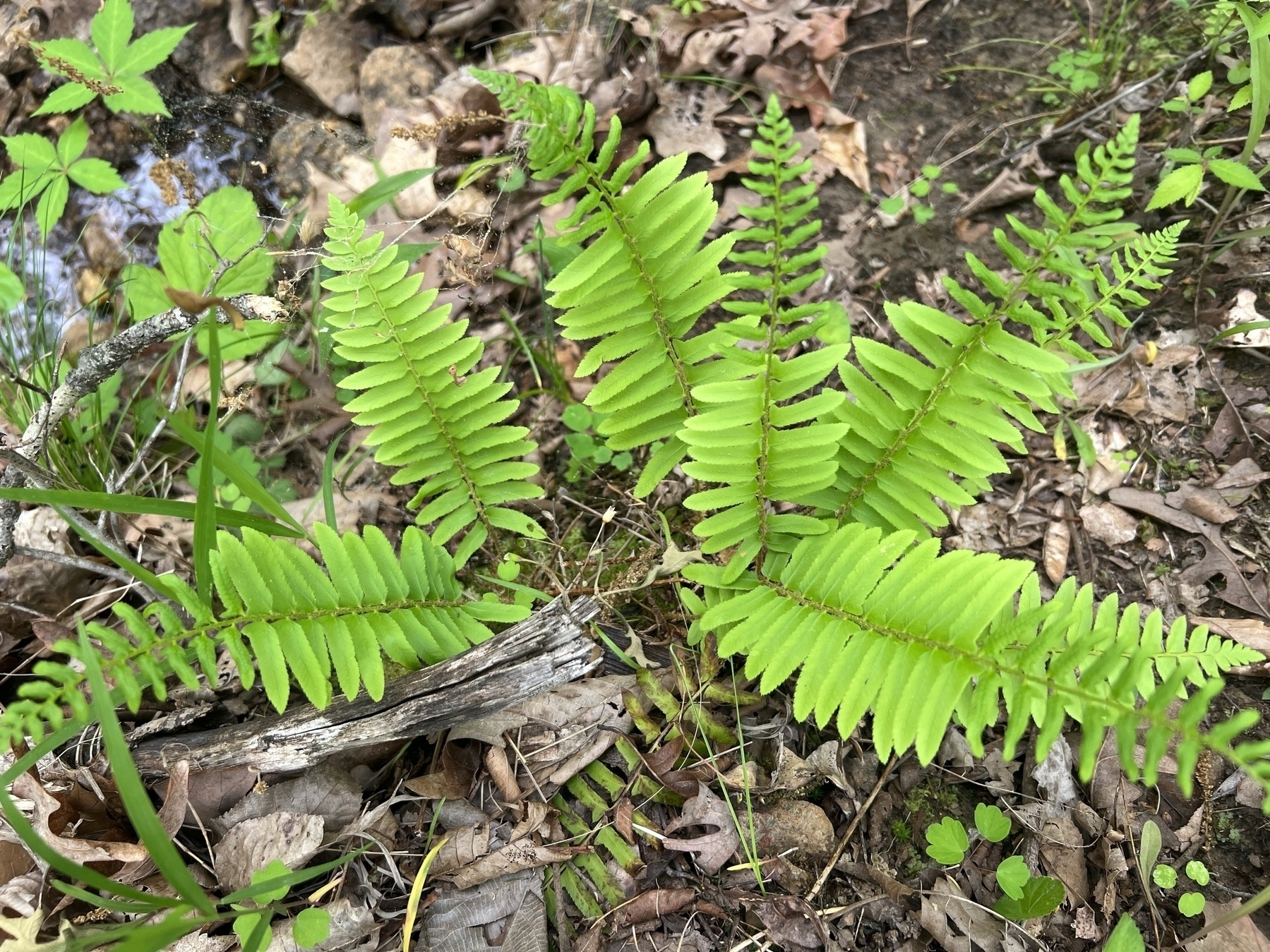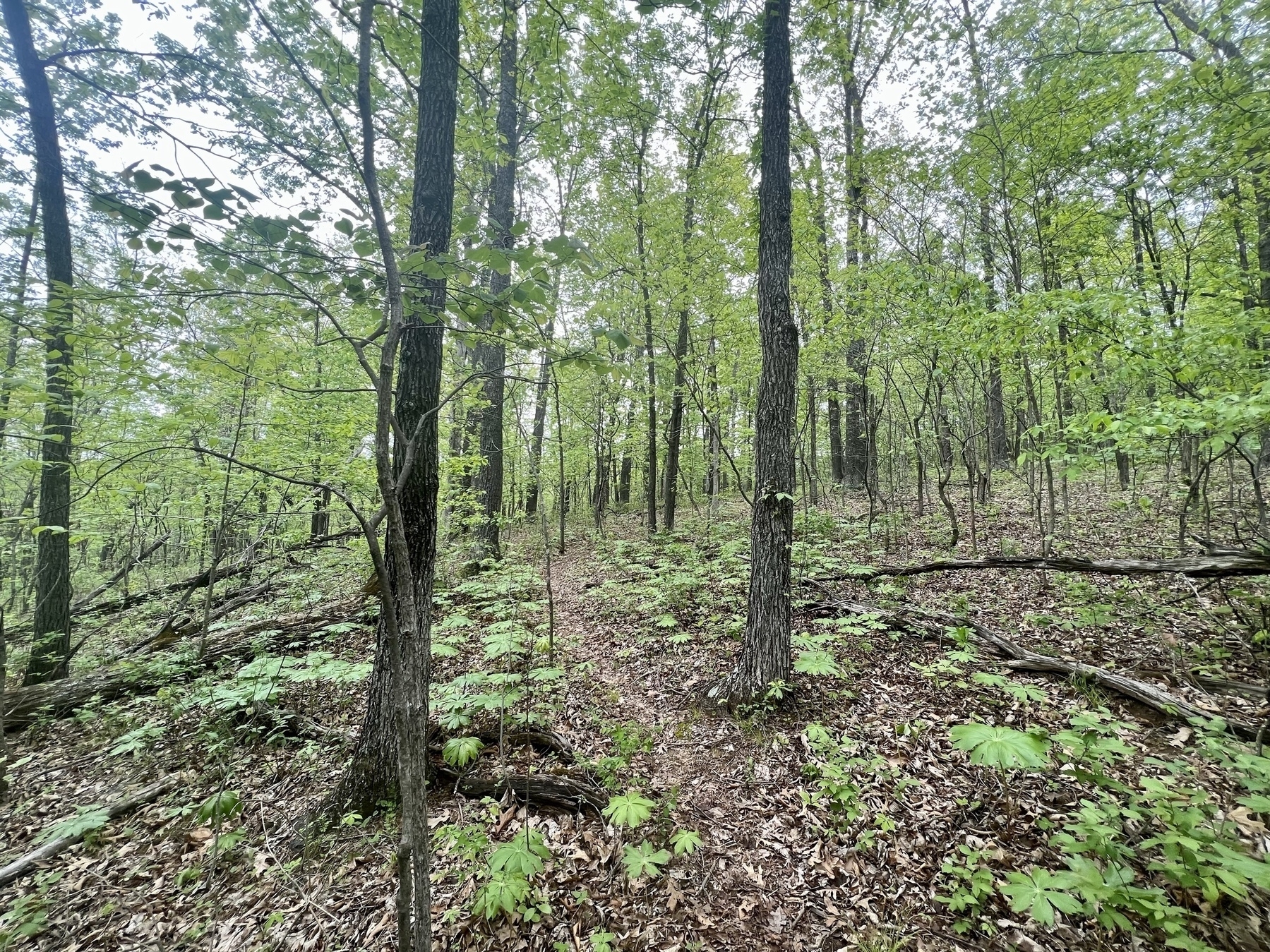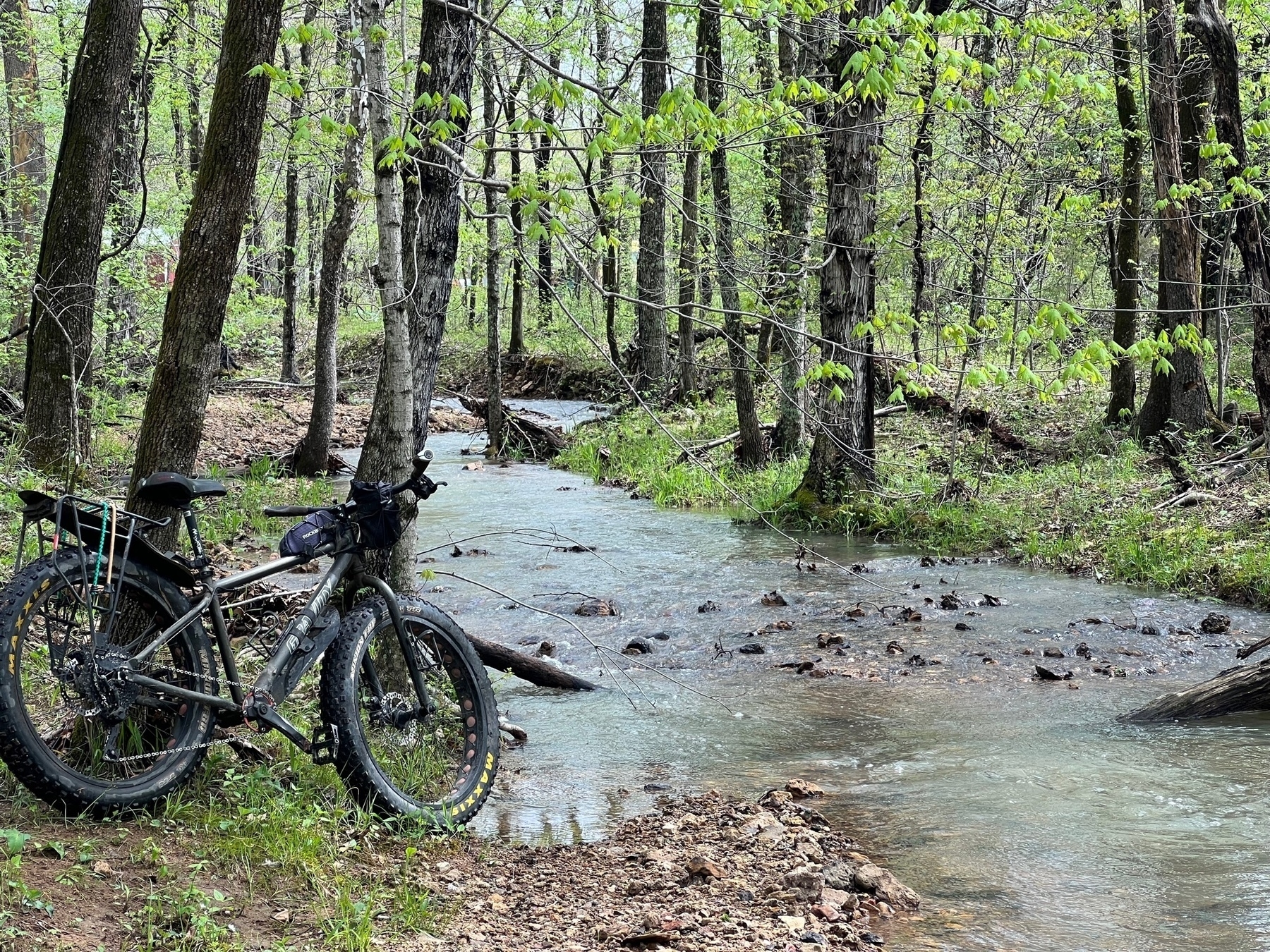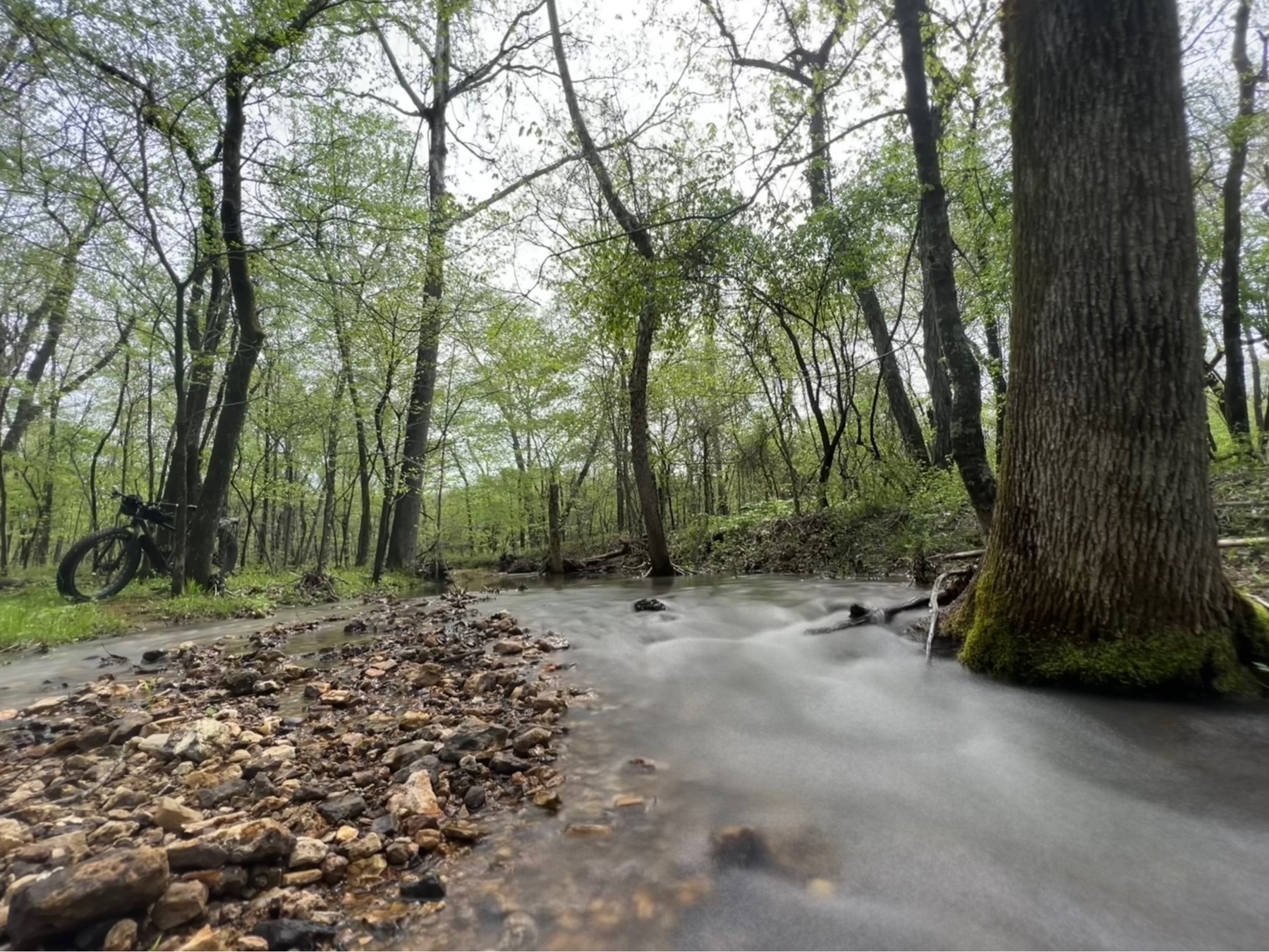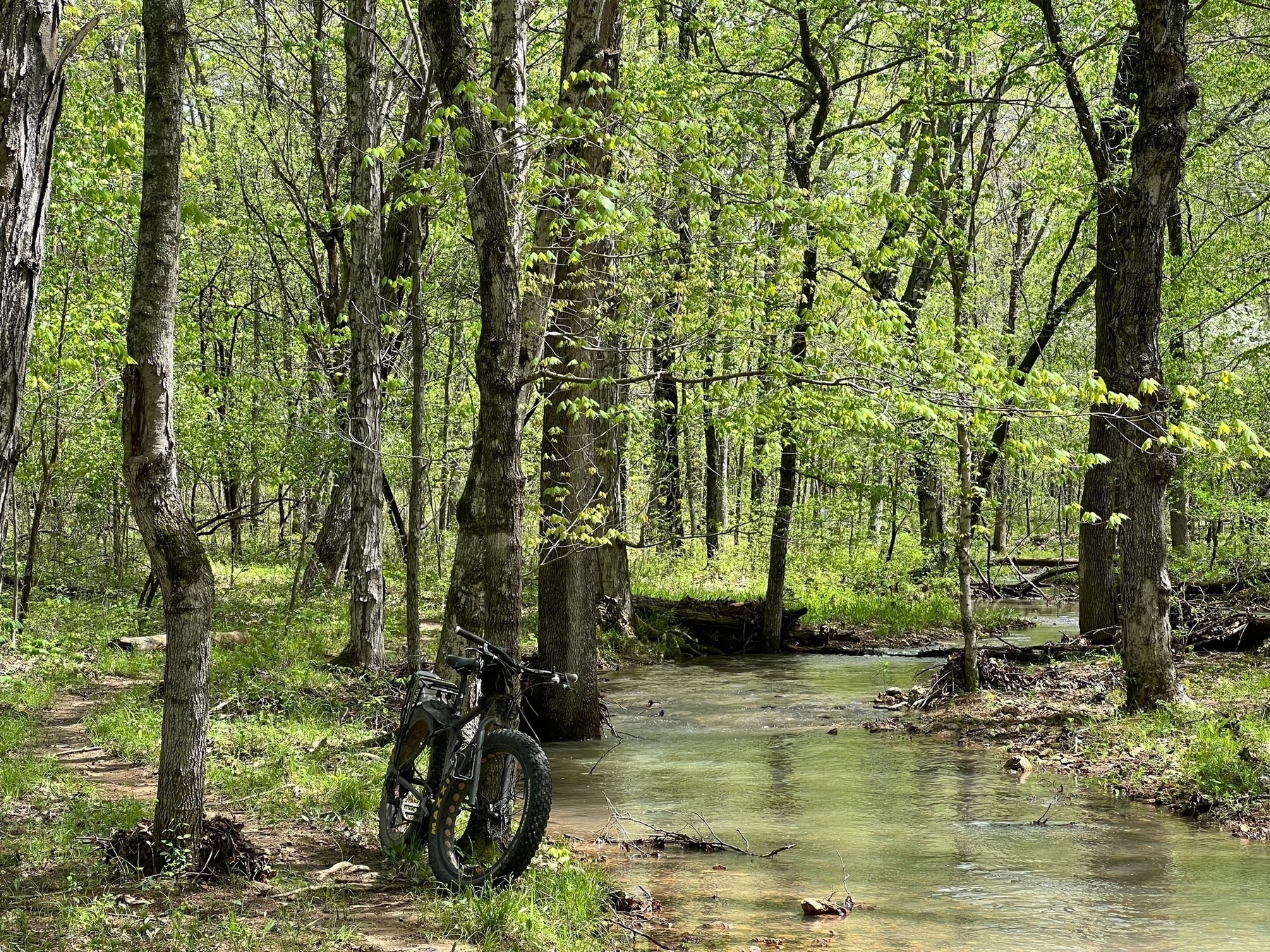Nature
- North Atlantic Right Whale (fewer than 500 left)
- North Pacific Right Whale
- Atlantic Humpback Dolphin
- Sei Whale
- Blue Whale
- Western Gray Whale
- Vaquita (a species of porpoise)
- Baiji (Possibly extinct)
With last night’s rain and the soft light this morning the fungi, lichen and moss really popped out at me during my morning trail walk.
Luminescent Panellus, Panellus stipticus and Eastern speckled shield lichen, Punctelia bolliana
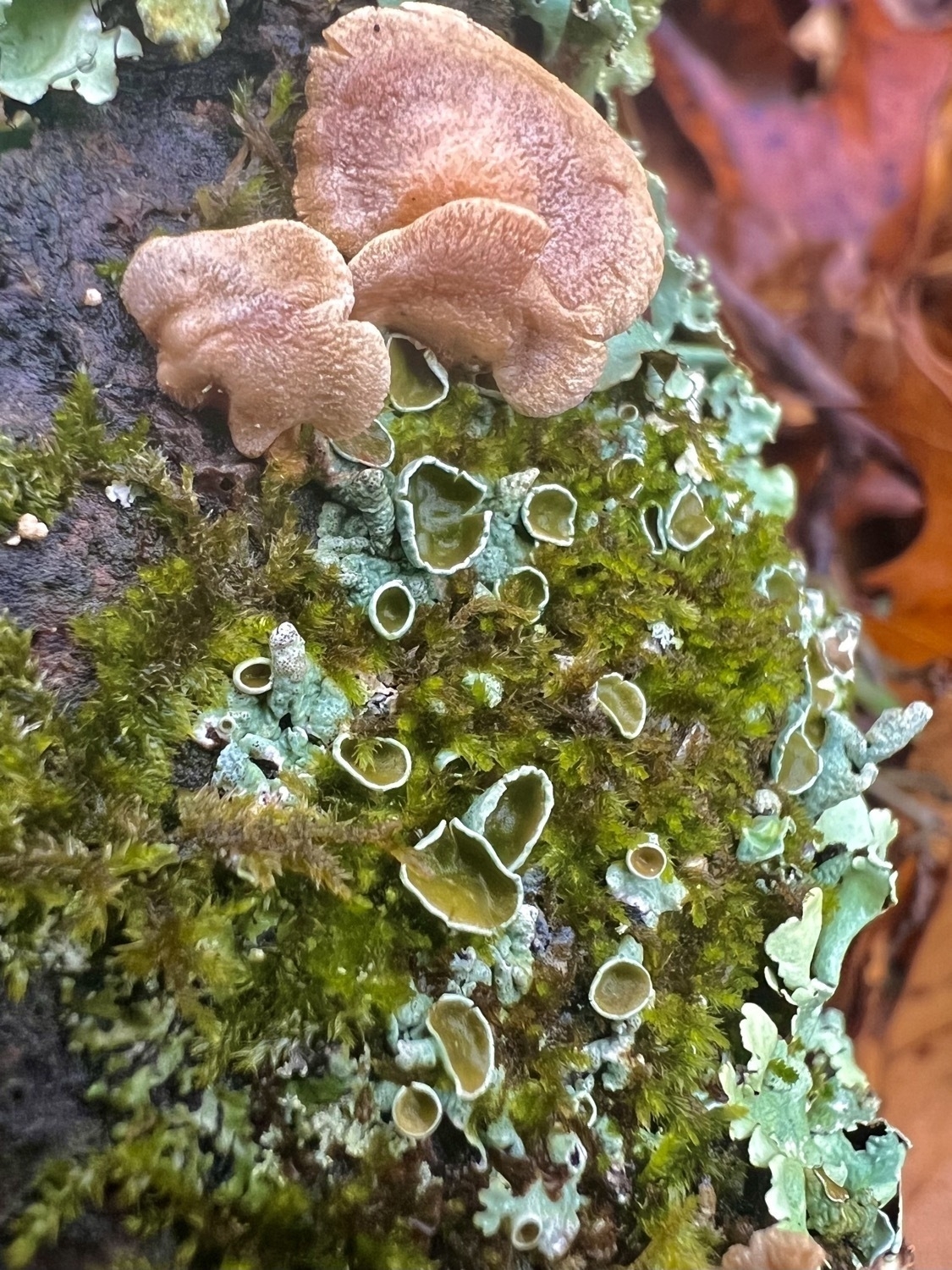
Sternum ostrea, false turkey-tail
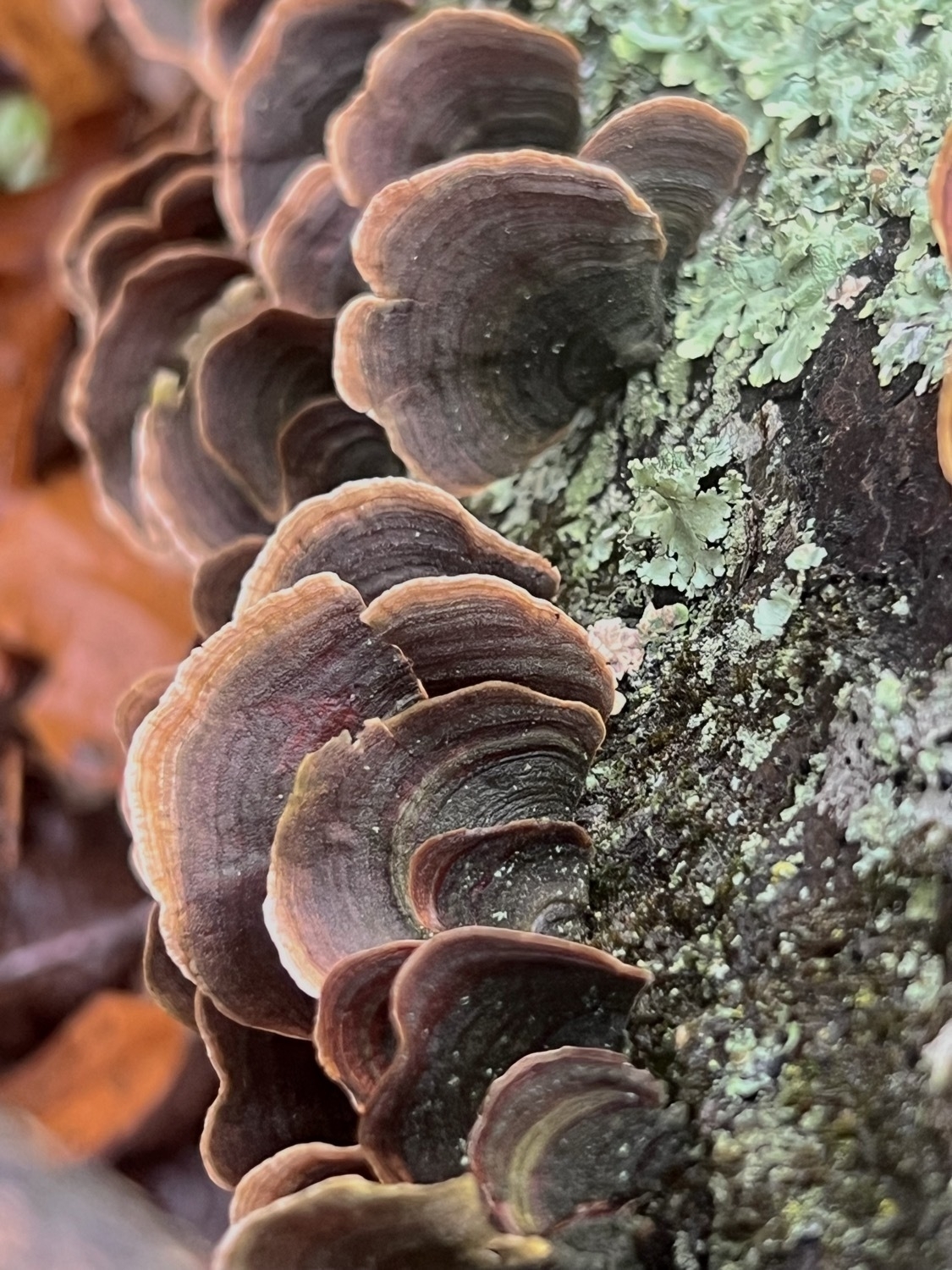
Tremella mesentercia, witch’s butter
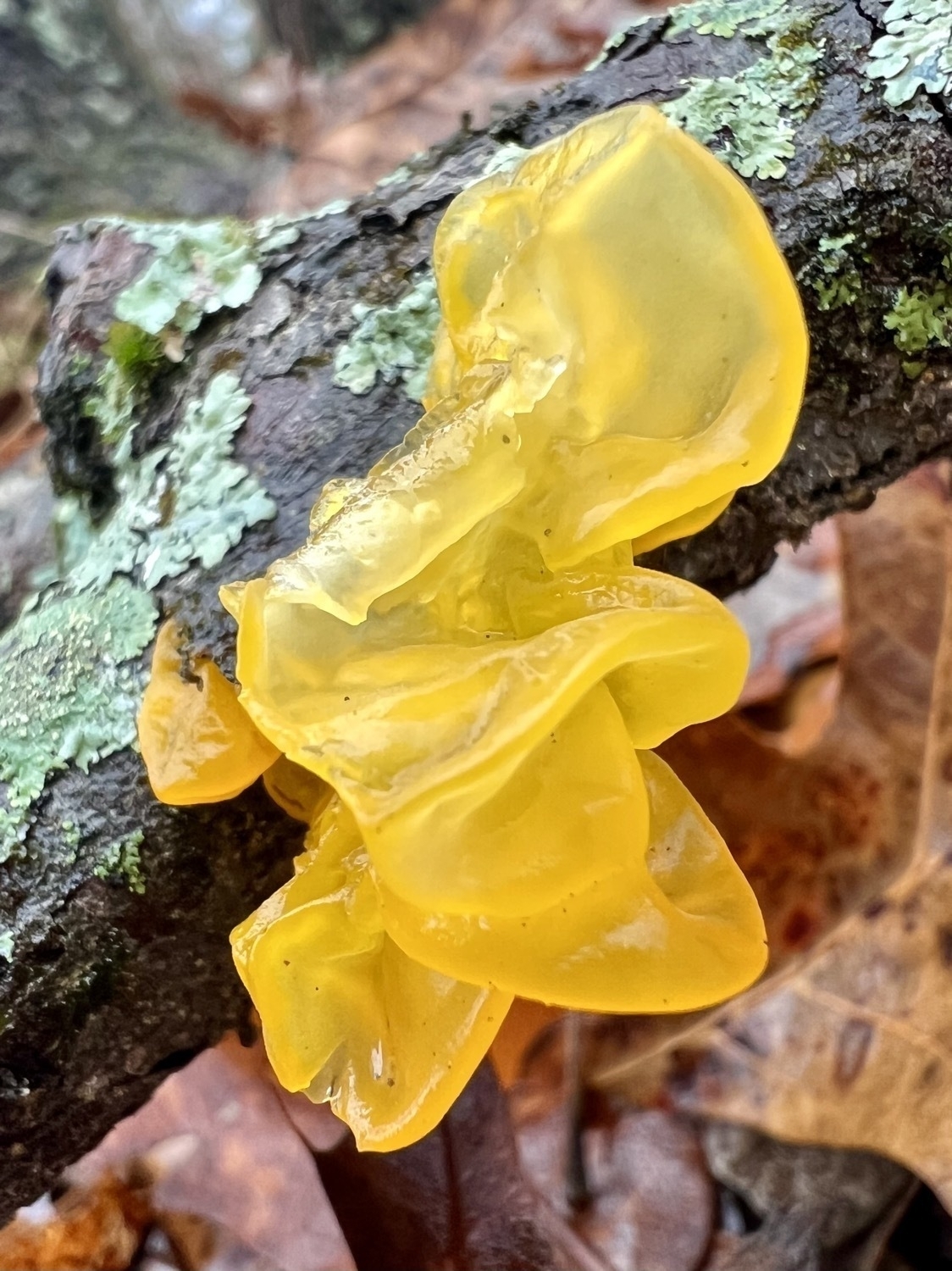
While out on a trail walk yesterday, I saw something small and white moving around in the leaves and met this cute, furry moth, Artace cribrarius, the dot-lined white.

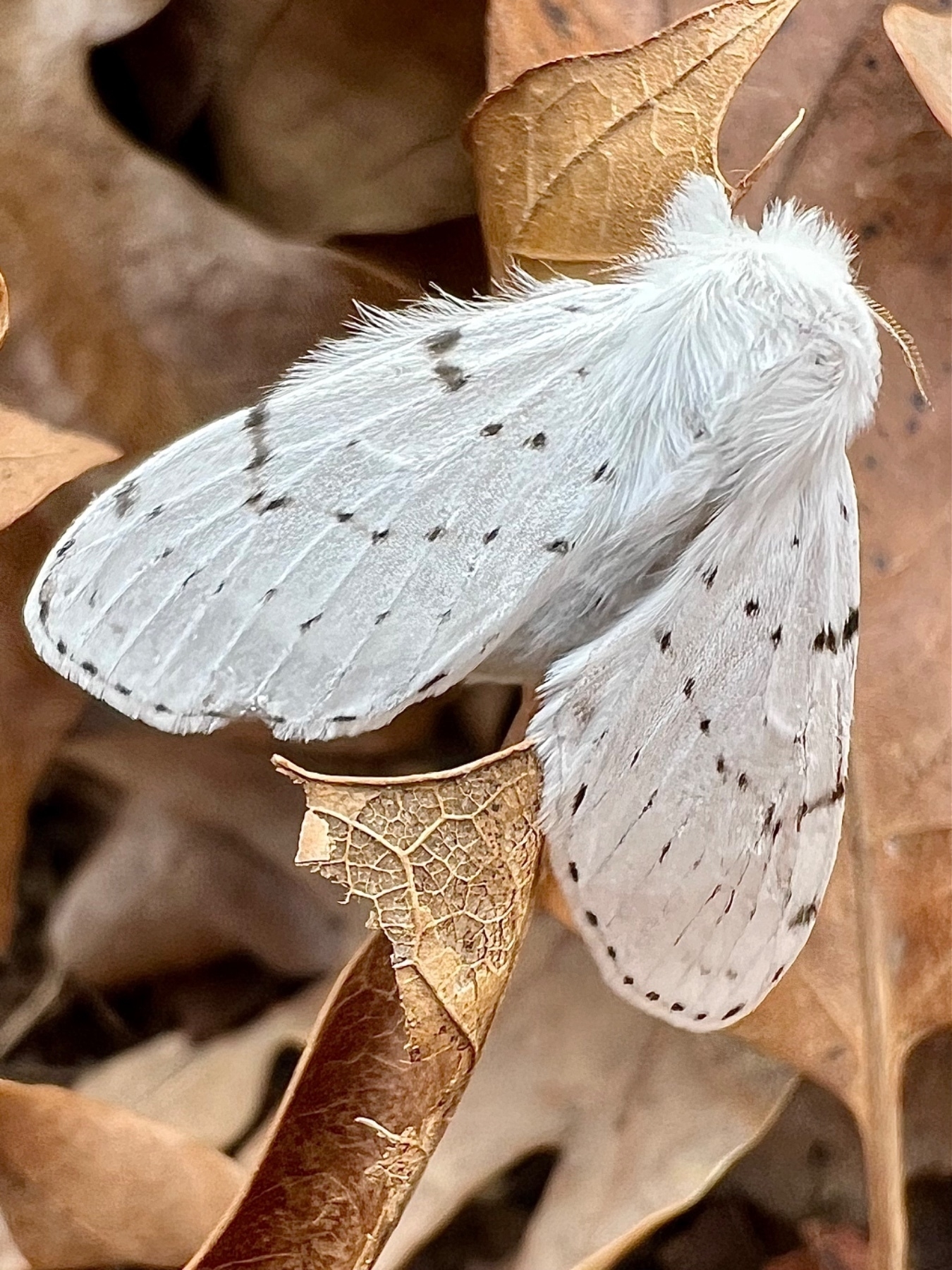
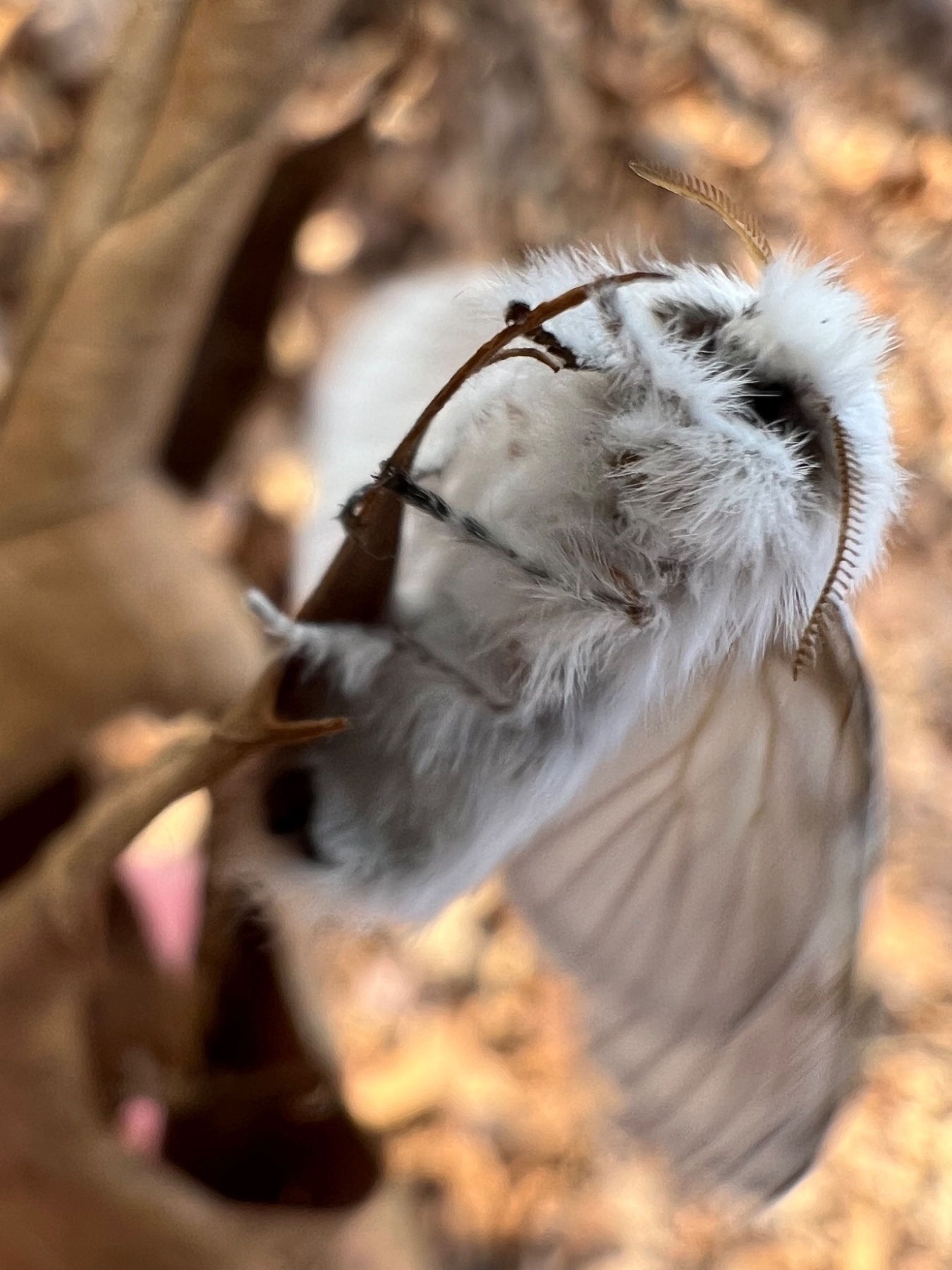
This morning I discovered a small group of pawpaws growing just 150 feet from my cabin! 🤗 I planted 2 in a different spot last spring but these volunteers are growing in the other spot I was considering. Which leads me to think there must be more in the area that I have yet to discover. 🤗
On my morning walk a couple days ago I came upon an Eastern Towhee singing in some cedar trees. Same again this morning but a different song. I took a few minutes to listen to the other songs in Merlin Bird ID and am reminded, yet again, that learning about my feathered neighbors is a never ending process. For every bird song I learn there are so many others that I do not know. And of course, as I learn some I sometimes forget along the way. I’ll only ever know a tiny fraction and even then I’m not learning what the song is about.
Acknowledging the depth and complexity of the natural world is truly humbling.
From a recent morning walk. Some beautiful sun rays and a tiny little wildflower.
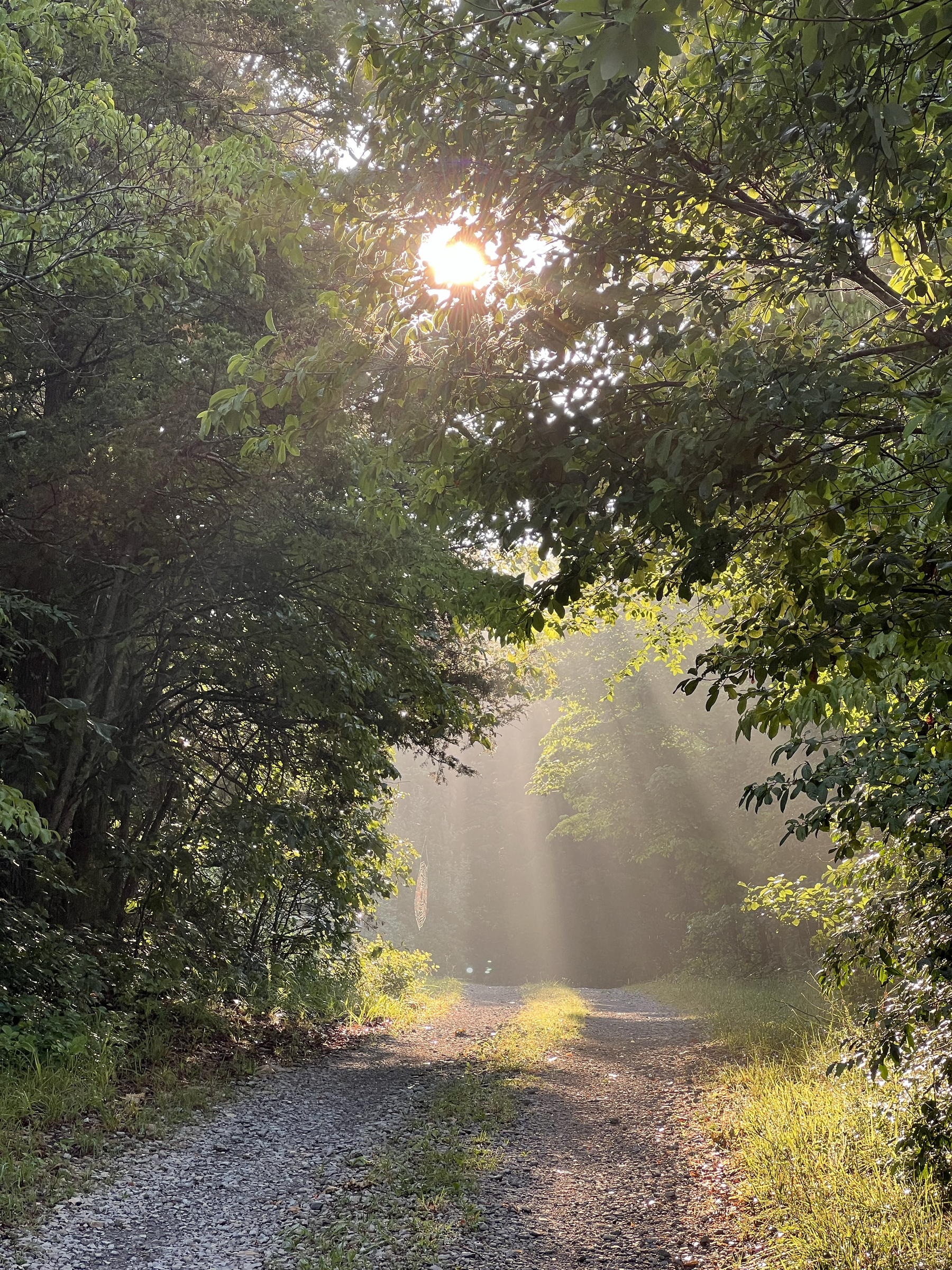
Dianthus armeria, the Deptford pink

A nice morning dog walk with all of the usual characters. I'm getting better at identifying bird song. Today: White-eyed vireo, yellow breasted chat, northern parula and cardinals.
Also, flowers:
Queen Anne's Lace
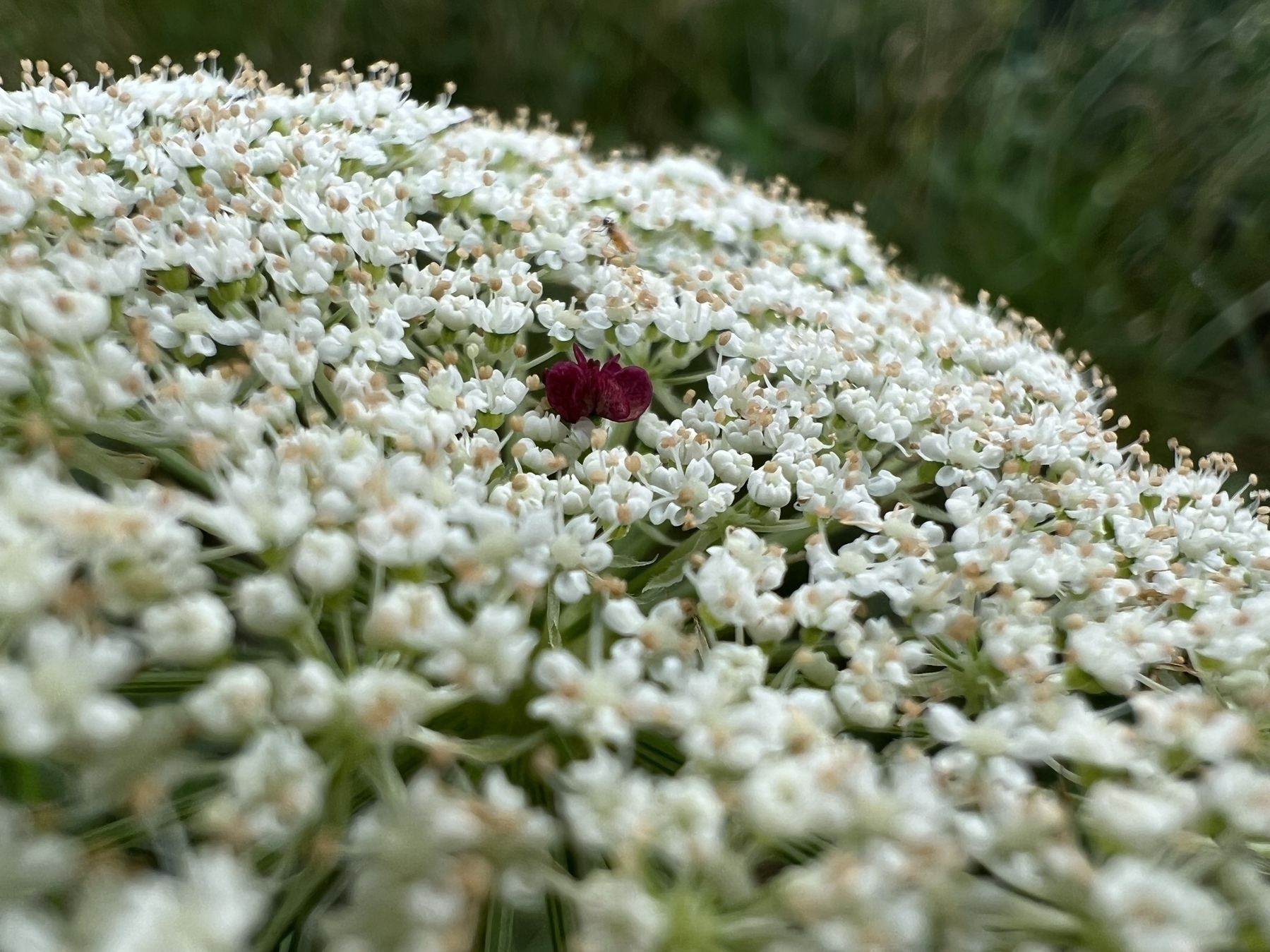
Chicory and a green bee, perhaps Agapostemon virescens.
Half of the world’s 10,000-odd bird species are in decline. One in eight faces the threat of extinction. This problem has been worsening for decades, which means scientists have been able to estimate roughly how many fewer birds are around today than, say, half a century ago. The numbers are startling.
Orcas disrupt boat race near Spain in latest display of dangerous, puzzling behavior | AP News
The behavior defies easy explanation.
Yes, it’s the Orcas with their dangerous behavior that we should focus on.
In other news, these are some of the whales that may go EXTINCT due to the actions of human beings:
But, yes, let’s do go on about the Orcas.
Based on these findings, the authors warn that more than a fifth of ecosystems worldwide, including the Amazon rainforest, are at risk of a catastrophic breakdown within a human lifetime.
“It could happen very soon,” said Prof Simon Willcock of Rothamsted Research, who co-led the study. “We could realistically be the last generation to see the Amazon.”
Ecological tipping points could occur much sooner than expected, study finds | The Guardian
From my archive, a buffet of Purple Coneflowers being enjoyed by pipevine swallowtail, Battus philenor and monarch butterfly. Native wildflower gardens always bring the prettiest critters. 🥰
My walk this morning was another slow bird walk. Started off 300 ft from the cabin with the beautiful and distinctive call of the yellow-billed cuckoo.
From there many of the usual characters chimed in. A wood thrush and ovenbird at the beginning. Not long after a bird song I didn’t recognize, a yellow-breasted chat. Very pretty song. And not long after I caught sight of one and was able to watch for a couple minutes.
Birds observed with binoculars: bald eagle, yellow breasted chat, white-eyed vireo, a thrush, likely a Wood thrush (my best guess, no sound ID to confirm) or maybe an ovenbird.
Songs heard: Yellow-billed cuckoo, northern parula, chipping sparrow, yellow breasted chat, white-eyed vireo, wood thrush, ovenbird
After breakfast this morning I had about 90 minutes before the rain was scheduled to come in so I got out for a walk with the dogs.
There was a lot of bird song so I took the binoculars and went slow. They were deep in the woods, so I didn't see many but they were all around me: blue-winged warbler, Wilson's warbler, white-eyed vireo, red-eyed vireo, summer tanager, ovenbird, Carolina chickadee.
Birds that I did get to see were: indigo bunting, chipping sparrow and a gray catbird
Got back just in time to take a quick ride down to the creek. A peaceful twenty minutes before the storm listening to the birds and the light rain dripping through the forest.
A few hours later an unexpected visit from a friend who I've not seen in awhile (Hi Bill!). We spent some time catching up on the porch and listening to the bird song. He has an uncanny ability to identify birds by their song and it's always a delight to visit with him. While we chatted another welcome visitor stopped by, a bright red summer tanager landed on a branch not too far away.
A few photos taken around the cabin yesterday. It's so easy to miss the beautiful but tiny critters.
Camonotus castaneus, chestnut carpenter ant
Augochlora pura, a solitary sweat bee found in the Eastern US.
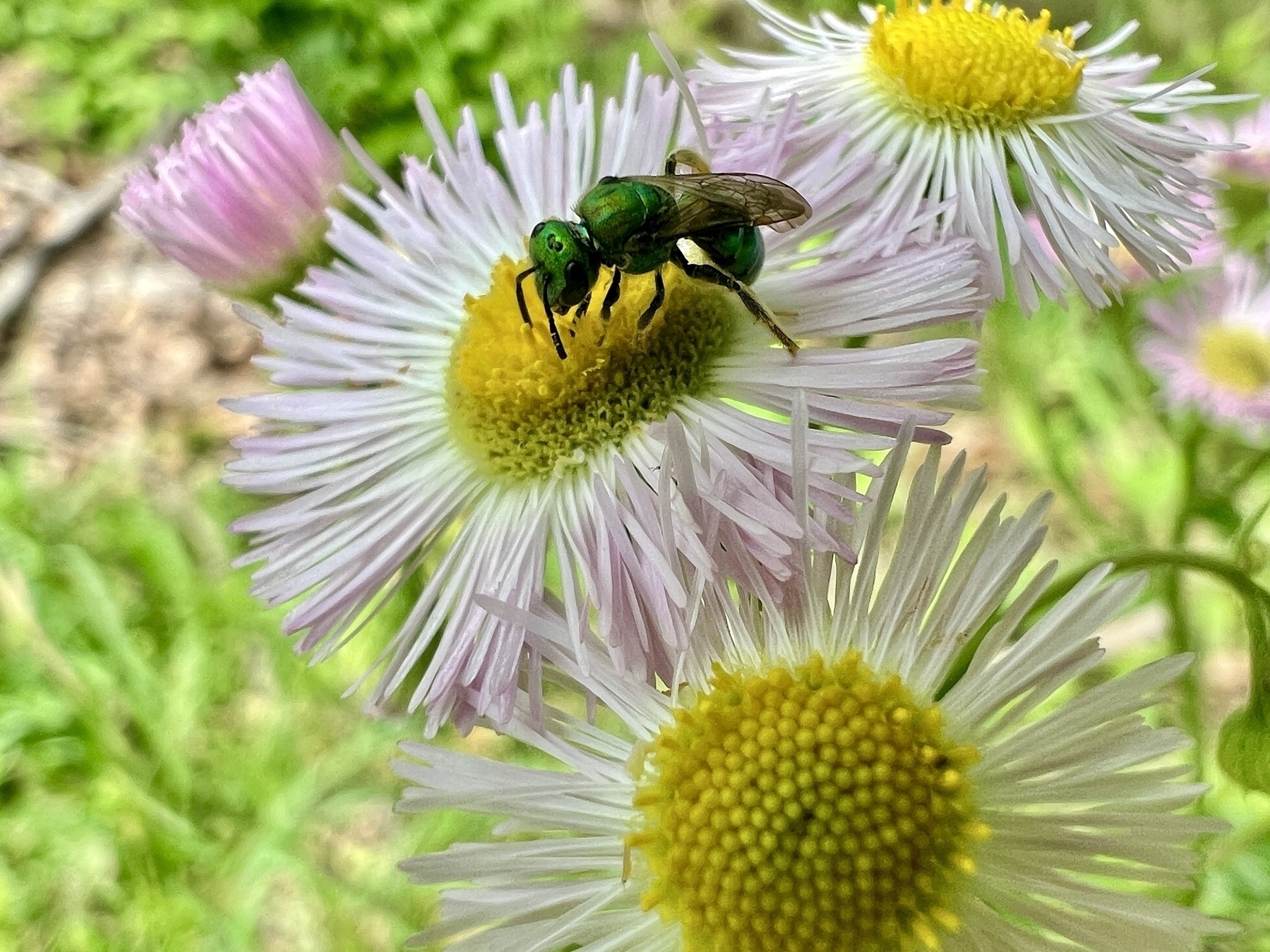
My photos only show a small area along the trail but this hill is covered in Mayapples. It's quite something.
Working on getting my blackberries sorted for the summer. Under the layer of grass clippings are layers of all sorts of paper and cardboard and under that are many very happy worms loosening up the soil. Still have a bit of weeding and transplanting to do.
Cofounder of Greenpeace and writer of the Deep Green column Rex Weyler helps us transcend the idea that we can fix the environment – or anything else – so we can finally learn to participate as members of a living world.
An excellent discussion between Rex Weyler and Douglass Rushkoff on the current episode of the Team Human Podcast.
With all the rain we've had recently the creek is flowing really well. My favorite place to stop and be still. These are the best moments in my simple, slow life. Learning to be content in a smaller radius and with as little external fossil fuel input as possible.
